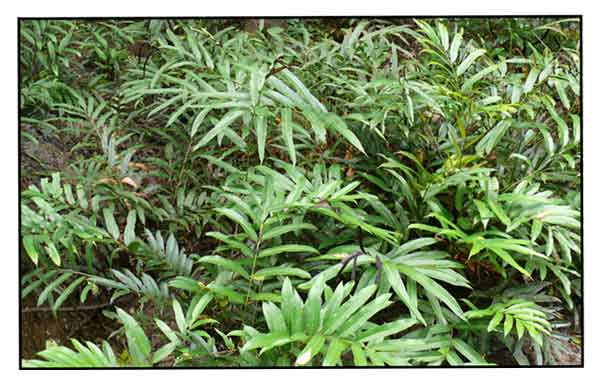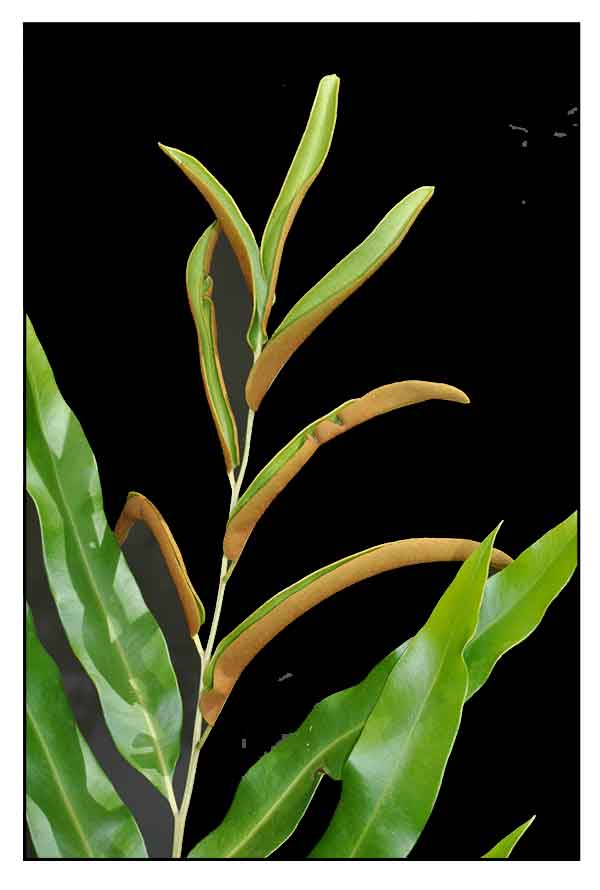
Family • Pteridaceae
Palaypay
Acrostichum speciosum Willd.
POINTED TIP MANGROVE FERN
Jian ye lu jue
| Scientific names | Common names |
| Acrostichum aureum var. speciosum (Willd.) T.Moore | Palaypay (Tag.) |
| Acrostichum calamarium W.Hunter | Mangrove fern (Engl.) |
| Acrostichum fraxinifolium R.Br. | Pointed tip mangrove fern (Engl.) |
| Acrostichum speciosum Willd. | |
| Chrysodium fraxinifolium (R.Br.) Fée | |
| Leptochilus raapii Alderw. | |
| Acrostichum speciosum Willd. is an accepted name. KEW: Plants of the World Online | |
| Other vernacular names |
| CHINESE: Jian ye lu jue. |
| MALAY: Piai lasa, Piai lasu. |
Distribution Properties Availability |
August 2022
![]()
 |
PHOTOS / ILLUSTRATIONS |
| IMAGE SOURCE: Photograph: Acrostichum speciosum / click on image to go to source page / click on image to go to source page / © Tropical Plant Book |
| OTHER IMAGE SOURCE: / Photo / Pteridaceae: Acrostichum speciosum Terminal portion of fertile lamina showing acuminate sterile and obtuse fertile pinnae / Copyright © 2013 by P.B. Pelser & J.F. Barcelona (contact: [email protected]) [ref. DOL75248] / Non-Commercial Use / click on image to go to source page / Phytoimages.siu.edu |
Additional
Sources and Suggested Readings |
• |
DOI: It is not uncommon for links on studies/sources to change. Copying and pasting the information on the search window or using the DOI (if available) will often redirect to the new link page. (Citing and Using a (DOI) Digital Object Identifier) |
| List of Understudied Philippine Medicinal Plants |
α• |
 |



